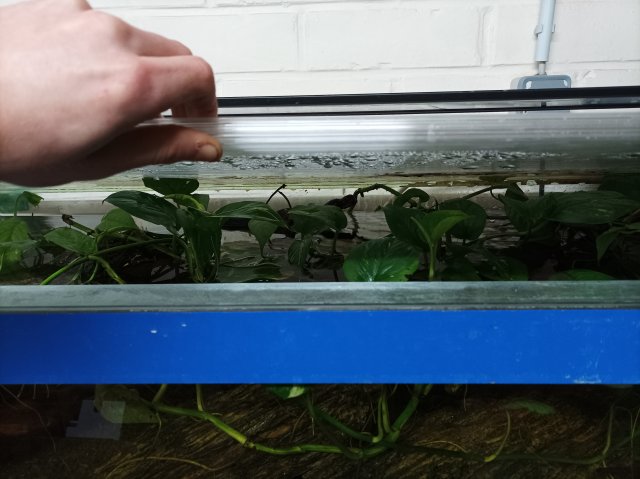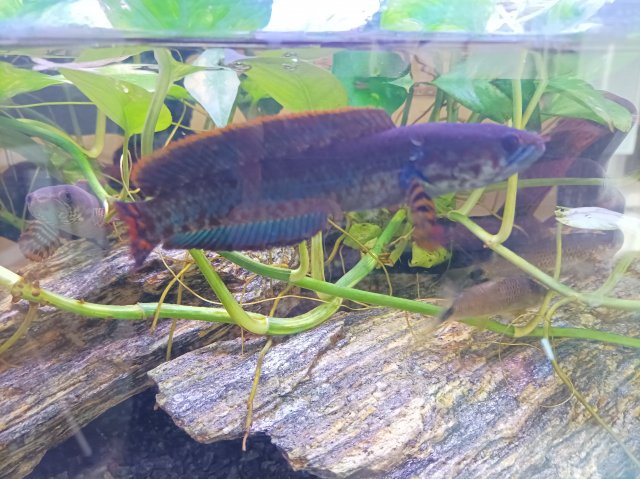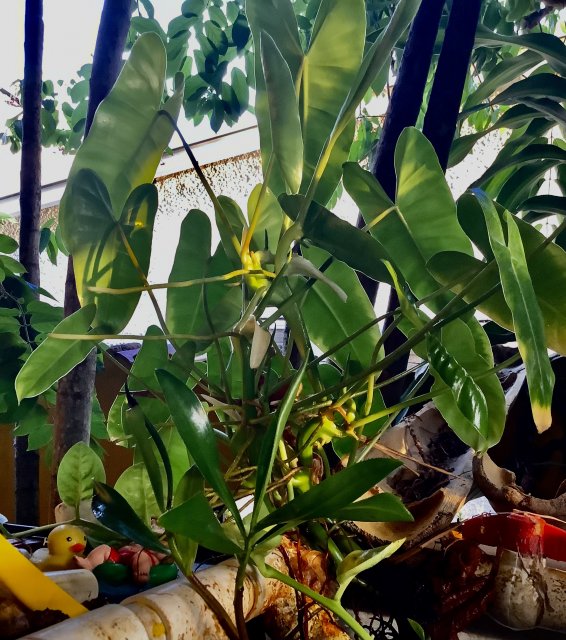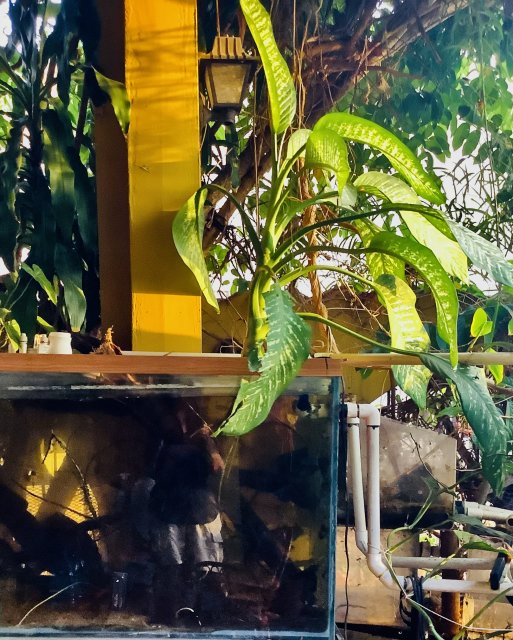Hello all!
I've searched a bit but could not find a post with a list of common house plants that are able to be kept in tanks. (I may have missed it though)
With this I'd like to make a list of common houseplants that can be safely grown in tank with no harm to the fish.
All the species I am listing as SAFE are species I've grown in the past, or am currently growing in tanks. (Incase I am wrong, do tell!)
Variegated plants of those I listed can also be grown, but I've had less good results with variegated species usually.
They grow best in covered tanks, since they thrive in humid enviroments you can also grow them in open top tanks, but beware that the room temperature can't drop too low when growing them in open top tanks.
Personally I've had a monstera Deliciosa growing out of an open top tanks for over 3 years and never had a problem, the plant grew a lot better compared to the ones I keep in pots.
But because of the European energy crisis last year I've heated a lot less during winter and had room temps between 50-60F at night (and during most of the day, I only heated for 3-4 hours to 65F at most) and I've noticed the plants suffered a lot from those temperatures, not only the ones in my open top tank but also potted plants. Those in covered tanks had no issues since I kept the tanks heated properly.
To the list!
COMPLETELY SAFE SPECIES
Epipremnum/Scindapsus/Pothos can be grown partially submerged, or fully underwater:
Epipremnum Cebu Blue
Epipremnum Aureum
Epipremnum Aureum "Marble Queen"
Most likely the other Epipremnum/Scindapsus species can also be grown, I just personally haven't tried those yet.
Scindapsus Pictus I have attempted before, but that species does not seem to adapt well to growing partially submerged. I kept getting root rot after a while.
Scindapsus is basically the same as Epipremnum, but the difference between those plants is almost invisible for most people. The only difference between Scindapsus and Epipremnum are their flower, which you usually never get to see anyway.
Monstera:
Monstera Deliciosa
Monstera Adansonii
Monstera Pinnatipartita
Chlorophytum, can not be grown fully submerged but can be grown with the roots in water. Good for "Pond" set-ups.
Colocasia, I've had quite a few species of Colocasia in my "pond tank" before, same as Chlorophytum it can not be grown submerged, but grows very well on pond edges or if you can grow it with only the roots submerged in the tank.
Papyrus can be grown partially, or fully submerged, but will grow above your water surface eventually. I've grown it at a 1foot depth before and it towered out of the tank after a month or 2.
Species of Juncus are also safe to grow partially submerged and some can grow fully submerged as well.
UNSURE WETHER THEY ARE SAFE OR NOT, BUT ABLE TO GROW WITH SUBMERGED ROOTS
Syngonium..
Personally I've grown Syngoniums in my Channa Bleheri tank, with no side effects, but I've read conflicting information online about their toxicity towards animals. Only grow them with the roots submerged, the plant itself will rot underwater.
Ferns..
A lot of ferns can also be grown with submerged roots, but I am unsure which are toxic and non toxic. I have yet to gain experience with them. I have grown ferns in closed tanks with soil and high humidity, but never in a fish tank. (if anyone has more experience with ferns, please shout!)
Calathea..
Same as the ferns I've grown Calathea in soil in closed tanks with very high humidity levels and they thrived in those conditions, but I'm unsure wether this plant could fully adapt to rooting on water for long periods of time / isn't toxic.
Propagating Calathea I've always done on water, but never left them in there for long periods.
WARNING RISK INVOLVED WITH THE SPECIES BELOW!!!
Philodendron vine species such as:
Philodendron Pedatum
Philodendron Brasil
Philodendron Micans
Philodendron Hastatum
Philodendron Mayoi
Philodendron "Dragon Tail"
Philodendron Squamiferum
Philodendron "Red Wings"'
Rhaphidophora Tetrasperma (Also referred to as Monstera Minima, but is actually of the Philodendron family)
HOWEVER take note that philodendron contains toxins in their leaves. You must either remove yellowing leaves immediately, or have it set-up so only the roots touch the water but the leaves cannot possibly go inside the tank. The toxins they carry are harmful for your water and fish.
All the Philodendron species I've listed I've succesfully grown on water for long periods of time, but have never taken the risk of growing them in an aquarium.
However I am listing them for those that are willing to take the risk, or can set it up in such a way that they can not enter the aquarium water aside from their roots.
Anthurium can also be grown with submerged roots but take note these also contain toxins so you must set it up in a similar way as Philodendrons so there is no risk of yellowing leaves decaying in the water.
Asparagus Fern can also be grown with the roots submerged but take note the fruit is toxic. However I have yet to see an Asparagus Fern grow fruits in a house-hold setting.
___________________________
If anyone has experience with different species I have not listed, please add to the list! I've always been passionate about plants as well as fish, so I've been trying to combine both hobbies together as much as possible!
Also if I happen to be wrong about anything, please tell! The safe species I've listed I've grown in tanks before without any negative effects so maybe I was lucky with some to never have had an issue with them.
My true passion in plants lays with succulents and cacti, however those will never be able to be grown in aquariums.
I've searched a bit but could not find a post with a list of common house plants that are able to be kept in tanks. (I may have missed it though)
With this I'd like to make a list of common houseplants that can be safely grown in tank with no harm to the fish.
All the species I am listing as SAFE are species I've grown in the past, or am currently growing in tanks. (Incase I am wrong, do tell!)
Variegated plants of those I listed can also be grown, but I've had less good results with variegated species usually.
They grow best in covered tanks, since they thrive in humid enviroments you can also grow them in open top tanks, but beware that the room temperature can't drop too low when growing them in open top tanks.
Personally I've had a monstera Deliciosa growing out of an open top tanks for over 3 years and never had a problem, the plant grew a lot better compared to the ones I keep in pots.
But because of the European energy crisis last year I've heated a lot less during winter and had room temps between 50-60F at night (and during most of the day, I only heated for 3-4 hours to 65F at most) and I've noticed the plants suffered a lot from those temperatures, not only the ones in my open top tank but also potted plants. Those in covered tanks had no issues since I kept the tanks heated properly.
To the list!
COMPLETELY SAFE SPECIES
Epipremnum/Scindapsus/Pothos can be grown partially submerged, or fully underwater:
Epipremnum Cebu Blue
Epipremnum Aureum
Epipremnum Aureum "Marble Queen"
Most likely the other Epipremnum/Scindapsus species can also be grown, I just personally haven't tried those yet.
Scindapsus Pictus I have attempted before, but that species does not seem to adapt well to growing partially submerged. I kept getting root rot after a while.
Scindapsus is basically the same as Epipremnum, but the difference between those plants is almost invisible for most people. The only difference between Scindapsus and Epipremnum are their flower, which you usually never get to see anyway.
Monstera:
Monstera Deliciosa
Monstera Adansonii
Monstera Pinnatipartita
Chlorophytum, can not be grown fully submerged but can be grown with the roots in water. Good for "Pond" set-ups.
Colocasia, I've had quite a few species of Colocasia in my "pond tank" before, same as Chlorophytum it can not be grown submerged, but grows very well on pond edges or if you can grow it with only the roots submerged in the tank.
Papyrus can be grown partially, or fully submerged, but will grow above your water surface eventually. I've grown it at a 1foot depth before and it towered out of the tank after a month or 2.
Species of Juncus are also safe to grow partially submerged and some can grow fully submerged as well.
UNSURE WETHER THEY ARE SAFE OR NOT, BUT ABLE TO GROW WITH SUBMERGED ROOTS
Syngonium..
Personally I've grown Syngoniums in my Channa Bleheri tank, with no side effects, but I've read conflicting information online about their toxicity towards animals. Only grow them with the roots submerged, the plant itself will rot underwater.
Ferns..
A lot of ferns can also be grown with submerged roots, but I am unsure which are toxic and non toxic. I have yet to gain experience with them. I have grown ferns in closed tanks with soil and high humidity, but never in a fish tank. (if anyone has more experience with ferns, please shout!)
Calathea..
Same as the ferns I've grown Calathea in soil in closed tanks with very high humidity levels and they thrived in those conditions, but I'm unsure wether this plant could fully adapt to rooting on water for long periods of time / isn't toxic.
Propagating Calathea I've always done on water, but never left them in there for long periods.
WARNING RISK INVOLVED WITH THE SPECIES BELOW!!!
Philodendron vine species such as:
Philodendron Pedatum
Philodendron Brasil
Philodendron Micans
Philodendron Hastatum
Philodendron Mayoi
Philodendron "Dragon Tail"
Philodendron Squamiferum
Philodendron "Red Wings"'
Rhaphidophora Tetrasperma (Also referred to as Monstera Minima, but is actually of the Philodendron family)
HOWEVER take note that philodendron contains toxins in their leaves. You must either remove yellowing leaves immediately, or have it set-up so only the roots touch the water but the leaves cannot possibly go inside the tank. The toxins they carry are harmful for your water and fish.
All the Philodendron species I've listed I've succesfully grown on water for long periods of time, but have never taken the risk of growing them in an aquarium.
However I am listing them for those that are willing to take the risk, or can set it up in such a way that they can not enter the aquarium water aside from their roots.
Anthurium can also be grown with submerged roots but take note these also contain toxins so you must set it up in a similar way as Philodendrons so there is no risk of yellowing leaves decaying in the water.
Asparagus Fern can also be grown with the roots submerged but take note the fruit is toxic. However I have yet to see an Asparagus Fern grow fruits in a house-hold setting.
___________________________
If anyone has experience with different species I have not listed, please add to the list! I've always been passionate about plants as well as fish, so I've been trying to combine both hobbies together as much as possible!
Also if I happen to be wrong about anything, please tell! The safe species I've listed I've grown in tanks before without any negative effects so maybe I was lucky with some to never have had an issue with them.
My true passion in plants lays with succulents and cacti, however those will never be able to be grown in aquariums.








